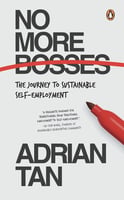Career Catfishing & Quiet Quitting: New Trends in Employee Engagement
Singapore’s workforce is undergoing a quiet revolution. Two trends – career catfishing and quiet quitting – are reshaping how employees engage with their jobs, posing challenges for employers and professionals alike.
Let’s go through these phenomena, their implications for Singapore’s competitive market, and uncover actionable strategies to foster healthier workplace cultures.

Understanding the Trends
Career Catfishing: The Disappearing Act
Career catfishing occurs when candidates accept job offers, complete onboarding formalities, and then vanish before their first day. In Singapore’s talent-scarce market, this trend is particularly disruptive.
- Why it’s rising: Gen Z workers (aged 27 and younger) are leading this shift, with 34% admitting to ghosting employers after accepting roles. Factors include:
- A desire for control over career paths.
- Dissatisfaction with opaque job descriptions or slow employer communication.
- The ease of accepting multiple offers in a digital-first hiring landscape.
Impact: For employers, last-minute no-shows delay projects and increase recruitment costs. For employees, it risks burning bridges in Singapore’s tightly-knit professional networks.

Quiet Quitting: Redefining Work-Life Boundaries
Quiet quitting involves employees doing only their core duties, rejecting unpaid overtime or “hustle culture. While not new, it’s gained traction post-pandemic as workers prioritise mental health.
- Key drivers:
- Burnout: 61% of workers globally cite exhaustion as a motivator.
- AI and remote work: Blurred boundaries between personal and professional time.
- Generational shifts: 72% of Gen Z value work-life balance over promotions.
In Singapore: According to Ranstad Singapore, with over 62% of employees prioritising a sense of belonging at work, quiet quitting often stems from feeling undervalued or overworked.

Why Singapore’s Workforce Is Vulnerable
| Factor | Career Catfishing | Quiet Quitting |
|---|---|---|
| Generational Influence | Gen Z (34%) | Millennials & Gen Z |
| Key Triggers | Poor employer communication | Burnout, lack of recognition |
| Economic Impact | Recruitment delays | $7.8tn (approx. SGD 10.2 m) global productivity loss |
Singapore’s unique context amplifies these trends:
- Tight labour market: Low unemployment (2.8% in 2025) empowers job seekers to be selective.
- Cultural shifts: Younger workers reject “kiasuism” in favour of holistic well-being.
- Hybrid work models: Remote arrangements make disengagement harder to detect.

Actionable Strategies for Employers
Combatting Career Catfishing
- Offer in-office previews: Invite candidates for team lunches or workspace tours to build connection pre-hiring.
- Maintain backup candidates: Keep 1–3 alternates per role to mitigate last-minute dropouts.
- Simplify opt-outs: Normalise phrases like, “We appreciate your honesty if plans change.
Addressing Quiet Quitting
- Conduct “stay interviews”: Ask, “What would make you excited to go above and beyond?”
- Implement micro-recognition: Use weekly shout-outs or small rewards for incremental wins.
- Audit workloads: Use tools like Asana to visualise task distribution and prevent burnout.
For Employees: Navigating the New Norms
- If career catfishing: Communicate early if rejecting an offer – Singapore’s industries are interconnected.
- If quietly quitting: Seek open dialogues with managers about unsustainable expectations before disengaging.
The Road Ahead
These trends signal a broader demand for transparency and mutual respect. For Singaporean firms, adapting means:
- Investing in employer branding: Showcase flexible policies and mental health support.
- Leveraging data: Track engagement through pulse surveys or platforms like Culture Amp.
As work evolves, success lies in balancing organisational goals with individual well-being. It’s a challenge Singapore’s agile workforce is well-equipped to tackle.
Key Statistics at a Glance
| Trend | Statistic |
|---|---|
| Career Catfishing | 34% of Gen Z workers ghost employers after accepting roles |
| Quiet Quitting | Disengaged employees cost $7.8tn (approx. SGD 10.2 m) globally in lost productivity |
| Singapore Priorities | 62% would leave jobs without a sense of belonging |
Let us know what you think about this topic, and what do you want to hear next.
You can now be our community contributor and make a pitch to have your favourite personality be on our show.
Join our community group and drop us your insights on this topic.

-3.png?width=50&name=Square%20(2)-3.png)









Let us know what you think of this post